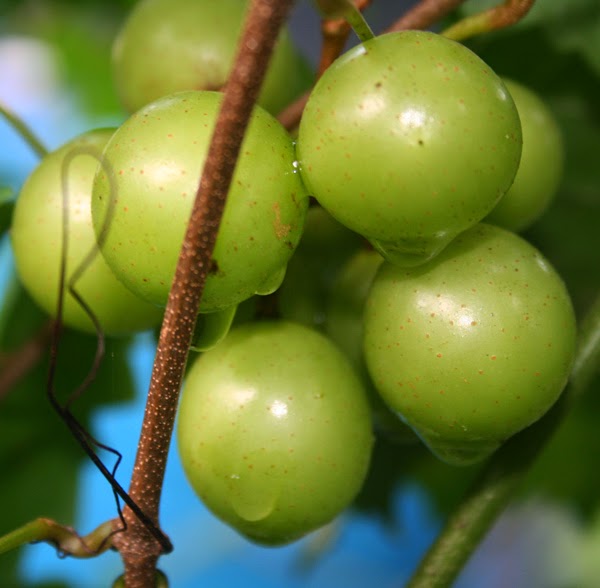Can you get in trouble for propagating patented plant varieties in your back yard nursery?
Kindell writes:
Hey David,
Got your latest book about starting a mini nursery biz. I found it wonderfully insightful and easy to read (not an easy feat in most books). The one topic I was left wondering about is the whole patented varieties deal. Like I don’t wanna get in trouble for selling something without rights to it. Did you worry about this? Is it even a real issue? How do I make sure I’m on the right side of legal?
Loving the new land and looking forward to seeing you develop it over time. Thanks for taking the time to read this and for all your wonderful content on YouTube and your page!
Blessings to you and yours,
Kindell (aka TheGardenHeiress)
This is the book she’s talking about:
I just got a paperback copy in the mail and it looks great.
As to the question, it was something I should add to future editions of the book. Yes, there are patented varieties of plant. You might see something like “Flaming Sunset” gardenia for sale in Home Depot and find out it’s a patented type by doing a search online.
There are resources online sharing what plant patenting means and how it works:
“A plant patent is granted by the United States government to an inventor (or the inventor’s heirs or assigns) who has invented or discovered and asexually reproduced a distinct and new variety of plant, other than a tuber propagated plant or a plant found in an uncultivated state. The grant, which lasts for 20 years from the date of filing the application, protects the patent owner’s right to exclude others from asexually reproducing the plant, and from using, offering for sale, or selling the plant so reproduced, or any of its parts, throughout the United States, or from importing the plant so reproduced, or any part thereof, into the United States.”
Most plants are not patented, however. And the patents only last 20 years. And generally, the patent police won’t show up and throw you in jail because you accidentally propagated your neighbor’s azalea without knowing it was under patent.
Why Are Plants Patented?
What they’re aiming to stop is the mass propagation of varieties that someone put a lot of breeding and research work into. Big nurseries who try to slip under the patent radar are higher profile targets for legal action.
I visited the blueberry breeding program at UF once and was amazed by the number of plants they grow from seed, test, and discard. They might go through 100,000 seedling blueberries before they breed one they deem worthy of naming and patenting.With that much work involved, you can see why people apply for patents. It’s a way of getting some royalties back which cover research and development.
“Without explicit consent from the owner, a person is prohibited from: selling, marketing, offering, delivering, consigning, exchanging, or exposing the variety for sale. In addition, a person is prohibited from soliciting an offer to buy the variety or transfer or possess it in any way. It is also illegal to import or export the variety, sexually multiply it, propagate it by tuber, use the variety in producing (as distinguished from developing) a hybrid, or condition the variety for the purpose of propagation.”
Public Domain Plants
I didn’t propagate patented varieties because I had no need to do so. There are so many excellent varieties in the public domain that there was no need to propagate anything else. And a lot of the plants I grew, like Mexican tree spinach and Chinese water chestnuts were too obscure for people to breed and patent.
There are also plants falling out of patent protection all that time. The Southern Home grape, for example, exceeded its patent just as I was starting my nursery.
“‘Southern Home’ was introduced in 1994 by J. Mortenson, J. Harris, D. Hopkins, and P. Anderson of the University of Florida. ‘Southern Home’ was selected from the cross ‘Summit’ x P9-15. ‘Southern Home’ is special among muscadine cultivars because the P9-15 parent is a complex hybrid between V. rotundifolia, V. popenoei, V. munsoniana, and V. vinifera. The first three species are all from the muscadinia subgenus, and V. vinifera is the standard wine bunch grape species. You can tell the hybrid nature of this cultivar by the cut leaf pattern of the leaves.”
In this video, I’m pruning my Southern Home grapes. That year, I couldn’t patent them.
The next year, I could!
1994, add 20 years, you get 2014 – and it’s wide open for propagation. The hard work done by the breeders in crossing FOUR species of grape together has been covered in royalties… and now you can reap the fruit without fear of legal ramifications.
If you think a plant is under patent, you can just skip it and propagate something else – or you can likely find it filed online, which will let you know.
Who Goes After Plant Pirates?
Interestingly, violations of patents are not pursued directly by the USDA. If you’re mass producing “Cascade of Color” Coleus, or whatever, the owner of the patent is the one responsible for going after you:
“The owner of a protected variety may bring civil action against persons infringing on his or her rights. The owner may ask a court to issue an injunction to prevent others from further violations. It is the owner of the protected variety who must bring suit in such cases. USDA will not take that action. In the USA, intellectual property protection for plants is provided through plant patents, plant variety protection, and utility patents. A plant variety can also receive double protection from both a utility patent and plant variety protection.”
The whole thing is unlikely to be trouble for a backyard nurseryman. Just don’t knowingly propagate someone else’s patented variety. With how many good things are out there with no restrictions, there’s no need to do it anyhow.



2 comments
This is a great topic and one that is near and dear to the hearts of my local chapter of CRFG as our Scion Exchange event is coming up. For fruit trees there are documents floating around like this one: http://www.ocfruit.com/files/Dave_Wilson_patented_varieties_2018_v1.pdf which list out varieties of budwood that are prohibited from events.
Generally that list is going to be full of stonefruits and interspecifics, with a few others outside that group. So you can get a lot of good info from searching the web as these clubs do publicize and update their Patented lists.
On the other hand there are tons of great heritage and long-existing varieties to propagate. Let the nurseries and growers have their royalties so that they can continue to dazzle us and do the expensive footwork of trialing and bringing new things to market. It will expire eventually and there is so much more to share without stepping on anyone’s toes.
I agree – and thank you for the link.
Comments are closed.